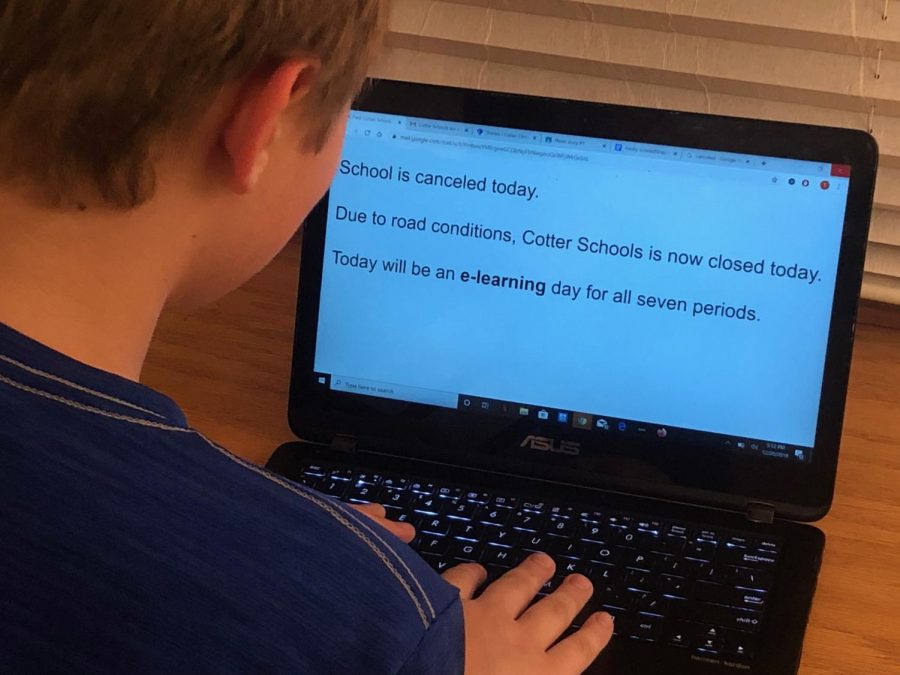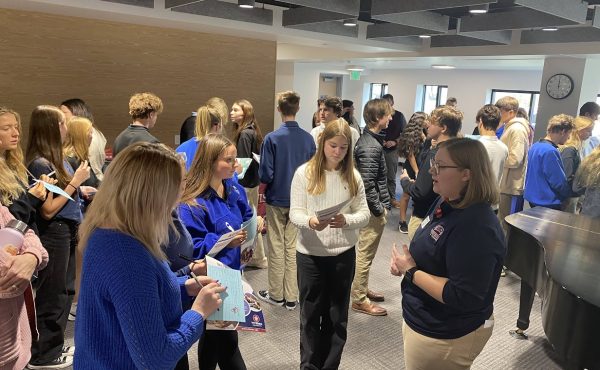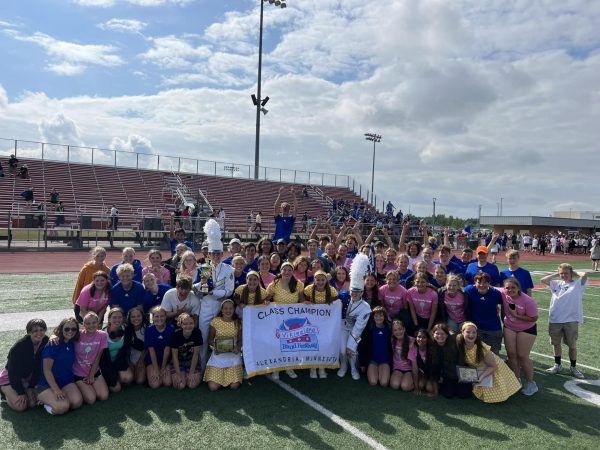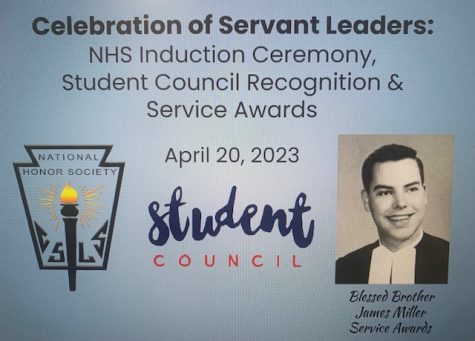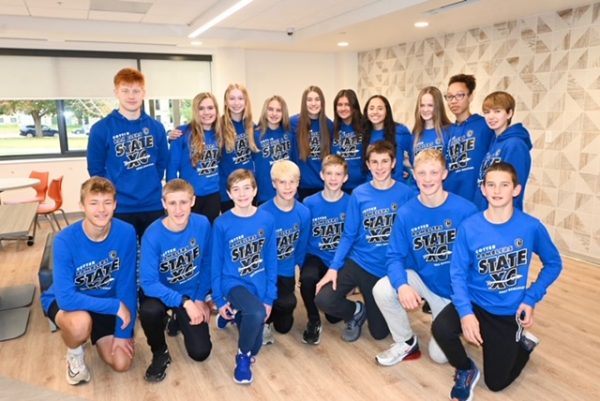How effective are e-Learning days?
Andrew Schmidtknecht checks his laptop on a snow day
E-learning days are the days when “students will continue to learn valuable content and skills even though the building is closed” as is stated in the Cotter handbook.
The question is how valuable is the content students actually learn on these days?
Due to the large number of snow and cold days in January and February of 2019, Cotter introduced e-learning days for the first time so that students would not get behind in their school work, but were students really able to learn during these e-learning days?
Many people have been wondering if e-learning days can actually be substituted for school days.
In certain subjects, e-learning can be beneficial in a class where it is easier to modify a lesson plan for online learning such as in English.
A teacher is able to assign students a chapter to read and give them a worksheet to fill out. However, for other classes where the student-teacher interaction is vital for a student’s understanding of a concept, such as any mathematics class It becomes more difficult for students to grasp these complex concepts without being able to interact with a teacher.
The same way e-learning days work well for certain classes they can work better for certain students.
“Some students did very well with e-learning days last year, others really struggled,” Cotter science teacher Katie Halvorson said.
E-learning days may work well for some students, but for students who were already having a hard time understanding materials e-learning days could make them more confused and place them further behind their classmates.
“It seemed like it was mostly busy work,” junior Claire Ebertowski said of last year’s experience on e-learning.
On e-learning days for certain class teachers will sometimes assign a worksheet that will not greatly aid students in their understanding.
Altering a lesson plan to be an e-learning day can be hard and “teachers need to consider whether what they are assigning is more busywork or a step toward learning,” Cotter history teacher Elizabeth Stevenson said.
“Another issue with e-learning days is figuring out when does the work need to be completed?” Stevenson said.
Some teachers make the assignments they post due at midnight or even ten p.m. rather than having them due the next class period as they would have if it were a regular school day which can be confusing for teachers and students.
If teachers made a recording of themselves teaching the lesson as Cotter math teacher Alison Heltemes does, this would make e-learning days less confusing. For math, the “flipped classroom” was very useful on e-learning days allowing the students to learn new topics.
“It is hard for kids to read a math textbook” and teach themselves” Heltemes said.
By creating a video a teacher is able to simulate the feel of a class and make lessons less confusing for their students because they do not have to try and teach themselves.
adjusting the school days after an e-learning day is important to ensure that whole learning occurs
— Mary Hansel-Parlin
E-learning days are helpful for AP classes because these classes must cover all the information on the AP test before the AP test in May. In these classes adding days to the end of the year would not stop students from falling behind so for these classes e-learning days can save precious time.
Despite the flaws of e-learning days students are still able to learn something, “e-learning saves about a half-day” Stevenson said.
If an e-learning day is well planned it still may not be equivalent to a regular school day but it could provide some learning. One important thing to remember is that “adjusting the school days after an e-learning day is important to ensure that whole learning occurs.” religion teacher Mary Hansel Parlin said.
While e-learning days are not the best they are far better than other alternatives such as extending the school year or coming in on Saturdays. “I would prefer to be with students in the classroom – however, I do not want to go to school in June,” Mary Hansel Parlin says. It is a difficult choice between e-learning days and other ways to make up missed class time.
Is there a better solution for missed school days?. After a certain amount of snow days the missed learning has to be made up in some way and while e-learning days may not be enjoyable they do help make up for the missed days.
In comparison to other alternatives for missed school days, e-learning days start to look like a much better option than school in the summer. While these days are not equivalent to time spent in the classroom with teachers and students, they provide a way for the two to be connected when the weather “rains on their parade.”


